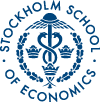No 2011:5: Value Driver Formulas for Continuing Value in the Discounted Cash Flow Model
L. Peter Jennergren ()
Additional contact information
L. Peter Jennergren: Department of Accounting, Postal: Stockholm School of Economics, P.O. Box 6501, SE-113 83 Stockholm, Sweden
Abstract: The influential valuation book by an author team from McKinsey recommends the so-called value driver formula rather than the Gordon formula for the continuing value in the post-horizon period in the discounted cash flow model for firm valuation. This recommendation has had considerable impact on valuation practice. This paper points out two weaknesses of the original value driver formula. The first weakness is that it is not a significant extension of the Gordon formula. The only case where it is applicable is where the requirement for working capital is not the same for the future growth projects (that are started in the successive years of the post-horizon period) as for the existing operations that are in place already at the end of the explicit forecast period, a fairly uninteresting case. In that case, the Gordon formula gives the same valuation result, implying that the original value driver formula is not necessary. The second weakness is that the split into existing operations and growth projects that underlies the original value driver formula implies that the existing operations are valued under the assumption of zero inflation, which is unreasonable if inflation is actually positive. This paper then derives a revised value driver formula that is a more significant alternative to the Gordon formula. In the revised formula, gross margins can differ between the existing operations and the growth projects. The valuation of the existing operations takes into account positive inflation. Continuing value is a sum of two separate value driver formulas, one for the existing operations and one for the growth projects. This means that most of the steady-state character of the post-horizon period is retained. A comparison with the original value driver formula in a representative setting indicates that the difference in resulting continuing values can be non-negligible.
Keywords: Valuation; free cash flow; discounting; continuing value; value driver formula; inflation
14 pages, First version: November 23, 2011. Revised: May 30, 2012. Earlier revisions: May 8, 2012, May 30, 2012.
Note: Published as: Jennergren, L. Peter. “Technical Note: Value Driver Formulas for Continuing Value in Firm Valuation by the Discounted Cash Flow Model.” The Engineering economist 58.1 (2013): 59–70. Web.
Questions (including download problems) about the papers in this series should be directed to Helena Lundin ()
Report other problems with accessing this service to Sune Karlsson ().
RePEc:hhb:hastba:2011_005This page generated on 2024-09-13 22:18:21.

